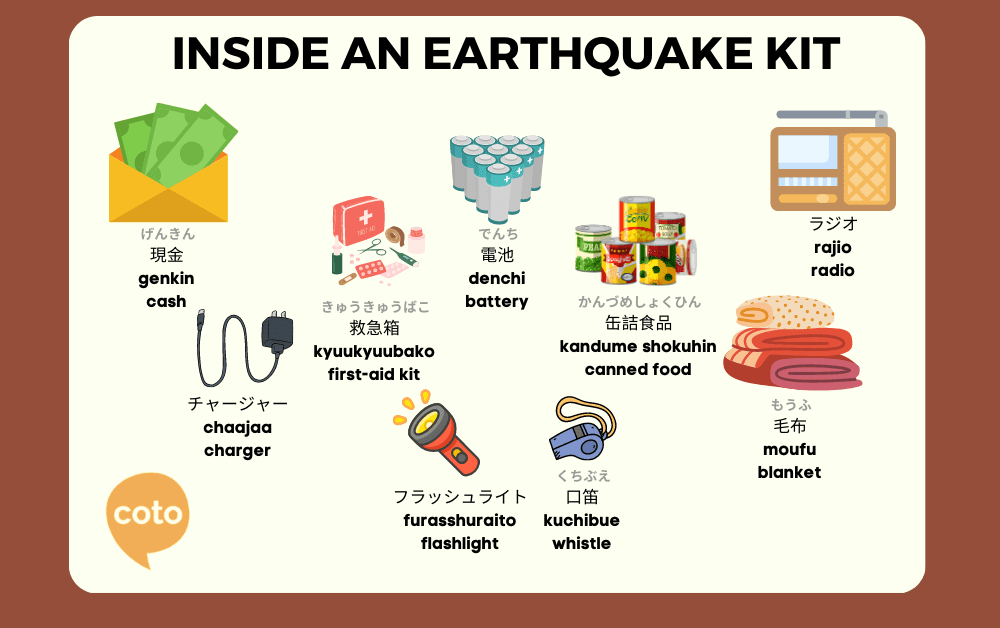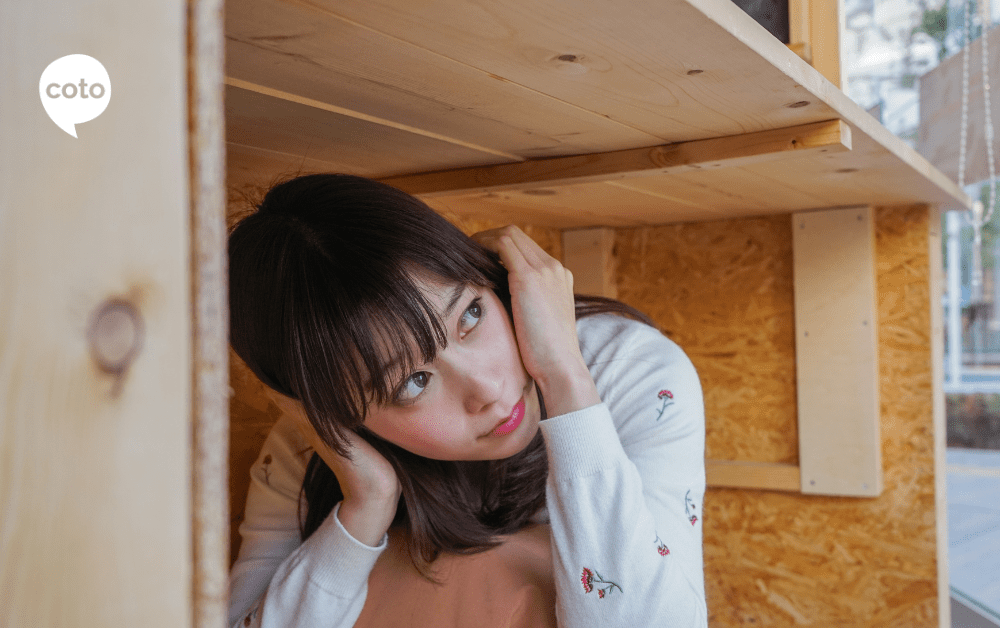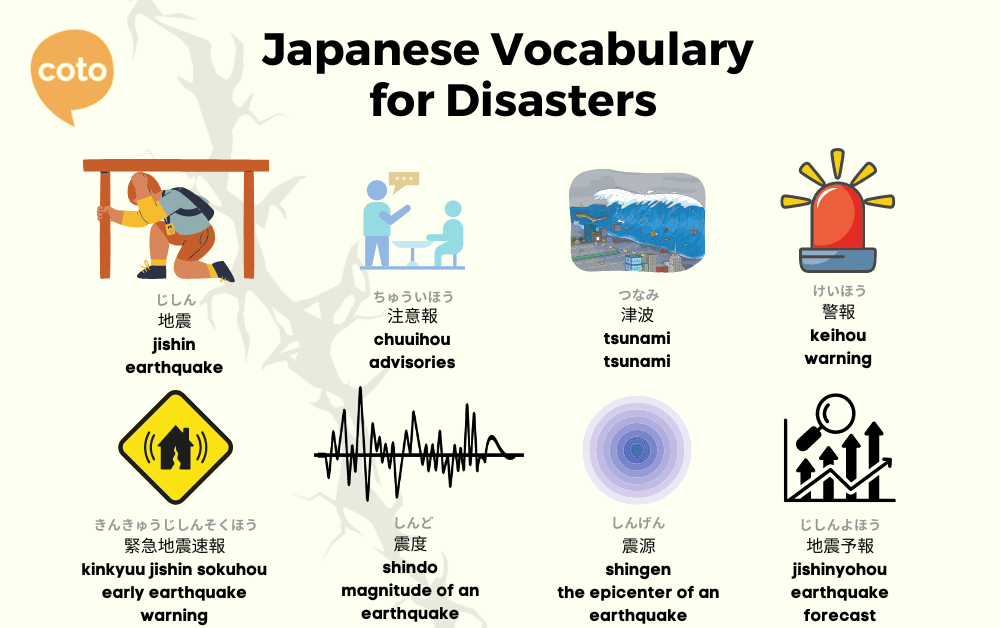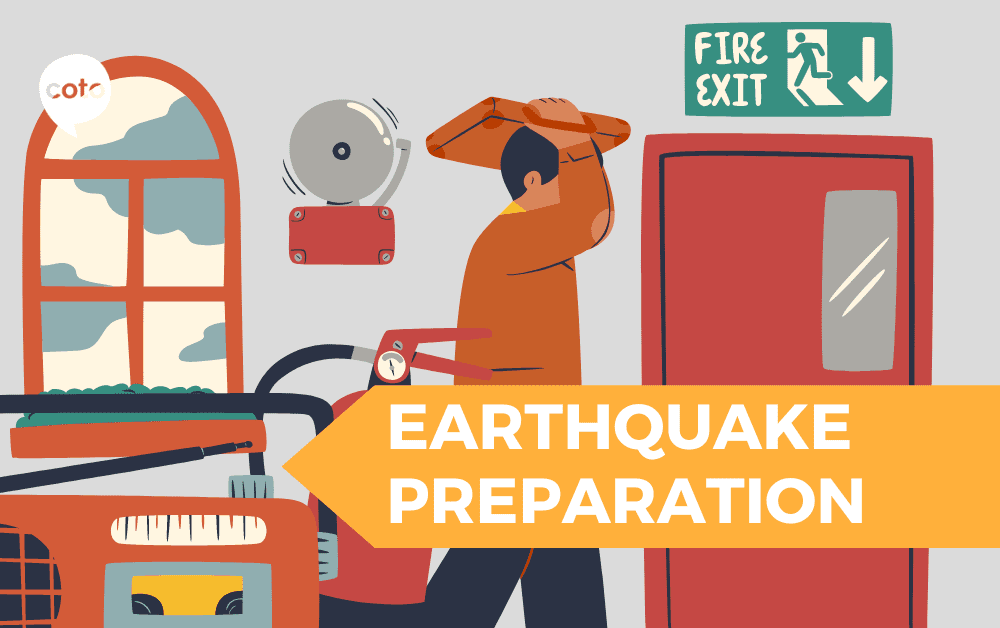If you live in Japan, chances are you have already experienced an earthquake, or jishin (地震), during your time here. As you probably already know, that’s due to the fact that Japan is one of the most earthquake-prone countries in the world, with a long history of earthquakes and tsunamis. Whether you’re just traveling to Japan or have been living here as a resident, have you learned what you need to do before, during and after an earthquake in Japan?
In this article, we will guide you through the main measures you should know to prepare and act in case of an earthquake. While there are many online resources, this article will be based on official information from the Tokyo Metropolitan government.
Read on for the full guide!
Jump to:
- Disaster Preparation in Japan
- What to Do in Case of an Earthquake in Japan
- Before an Earthquake in Japan
- During an Earthquake in Japan
- After an Earthquake in Japan
- Japanese Vocabulary for Disasters
- Conclusion
Disaster Preparation in Japan
With the country sitting at the intersection of several tectonic plates along the western edge of the Ring of Fire, Japan experiences thousands of earthquakes each year, with most of them being of little intensity and causing limited damage.
As a vital safety measure, the Japanese government has implemented strict building codes to alleviate the potential threats of property damage and, most importantly, life losses. Buildings in Japan must have seismic isolation, base isolation, and energy dissipation systems. They should be built with reinforced concrete and steel frames to withstand ground liquefaction, strong winds, and typhoons. All buildings must also pass strict fire safety, emergency lighting, and egress measures before being allowed to be used by residents.
Japanese authorities across the country also regularly conduct widespread earthquake drills in places such as public buildings, schools, and offices, to ensure that residents and workers are prepared in the event of an actual earthquake. By being prepared, residents can increase their possibility of staying safe while also protecting others.
What to Do in Case of an Earthquake in Japan
In case of an earthquake, making the right decisions can be the difference between life and death. The Tokyo Disaster Prevention Information Website recommends preparing in advance by imagining what you would do when a disaster hit. Participating in fire and disaster drills is advisable to have an idea of how an emergency situation could develop. They also recommend talking about it with your family and the people you are living with, so you can all be aligned on the emergency procedures.
When disaster strike, however, is when you should be most prepared for it. Here are important steps that you can do before, during, and after an earthquake to decrease the risk of getting hurt.
Before an Earthquake in Japan
Preparation is essential. Know the evacuation routes close to your house, and write down important phone numbers that you might need in an emergency, as the internet will probably stop functioning.
| Number | Function |
|---|---|
| 110 | Emergency call to the police (for crimes and arrest) |
| 118 | Call 118 to report an accident or crime at sea to the Japan Coast Guard. |
| 119 | Call 119 to report a fire, ask for an ambulance or rescue service, or to contact an emergency call center (a fire station). |
Check your ward office’s disaster preparedness online website for other helpful information that could help you. Save the important information near your emergency kit. Also, you can rely on technology and activate earthquake emergency alert notifications on your iPhone or Android.
What to Prepare in Your Earthquake Kit

You have probably heard of earthquake or disaster kits. Earthquake kits are bags filled with the most essential items you will need when you are required to leave your house due to natural disasters or any other emergency in Japan.
Most households have prepared a survival kit. Usually, these come with items such as portable radio, batteries, a first-aid kit, chargers, a flashlight, a whistle, blankets and some cash.
You should have a supply of nonperishable food, like food bars and canned items, and water for at least three days. Reviewing and updating your disaster kit regularly is a good idea to ensure that all the items are fresh and you have enough supplies to last at least 72 hours. Remember that being prepared is the key to surviving an earthquake or any other emergency.
It is also vital to “quake-proof your home or room,” which basically means securing furniture such as cabinets and bookshelves, as well as large electronics to prevent them from falling in case of an earthquake. In most Japanese hardware stores, you can find straps and tools for fastening and securing items.

During an Earthquake in Japan
Luckily, Japan has a great earthquake warning system. Major phone carriers (Docomo, Softbank, and au)have developed Cell Broadcast systems to send multiple users a message of the EEW — Earthquake Early Warning, or kinkyuu jishin sokuhou (緊急地震速報). You will usually get this warning moments before an earthquake in your area starts, which should give you time to prepare ahead.
If you experience the first signs of an earthquake at home or in your office, stay calm and stay as safe as possible. Locate and move to a place where you will be protected from falling objects, furniture, and other heavy items that could slide into you.
Avoid hiding under furniture that could instead hurt you or near falling objects such as televisions, mirrors, or windows. Instead, take cover under a sturdy piece of furniture, such as a desk or table, or in a doorway. Always prioritize protecting yourself and your family, and don’t care much about your material possessions.
Drop down onto your hands and knees before the earthquake knocks you down. If possible, hold on to something that could keep you in place in case of violent tremors, and wait until the shaking stops before moving. It is important to mention to avoid running outside during an earthquake, as you are less likely to be injured if you stay where you are.
If you are in your bedroom, protect your head with items such as a pillow or bed quilt to avoid being hit by broken window glass or falling ceiling lights. Also, move to a place where floor lamps or dressing tables will not topple over on you.
If you happen to be in a bathroom or toilet, there’s the risk you might get trapped inside, so open the door when you feel a tremor. If possible, move to a safer place, such as the hallway or front entrance, so that you can quickly evacuate. The bathroom can also be a dangerous place as you aren’t wearing any clothing to protect yourself. In that case, cover your head with a washing basin or something to protect yourself from the shattered glass of mirrors or light bulbs. Try to quickly get out of the bathroom and move to a safe place.
If you’re outdoors, try to locate an area away from trees, signs, buildings, electrical wires, and poles, and follow the other measures previously mentioned. Cover yourself, especially your head and neck, as they are vulnerable to injury from falling objects. Be careful of broken glass, bricks, or cement falling from buildings. Also, utilize your backpack or bag to protect yourself.
In the case an earthquake happens when you are in a car, pull over as quickly as possible and stay away from potentially falling trees, buildings, or overhead wires. Wait in the car if you can. If you are on public transport such as subway, trains, or buses, follow the emergency measures, drop down, cover yourself, and wait for the shaking to stop. Then, follow the instructions from the conductor.
After an Earthquake in Japan
Wait till the shaking subsides completely, and once ready to move, be careful not to be injured by shattered glass, broken ceramic objects, and other hazardous objects. If your home is safe, try to stay home, but if you need to leave, head to the nearest evacuation area, or hinan basho (避難場所).
Rushing out of your house in a panic puts you at risk of getting hurt by a falling object. Double-check the situation around you with your eyes and ears, and prevent the danger from any dangerous objects, buildings, or a possible fire outbreak. After it, calmly secure an exit, either through a door or a room’s window. However, be careful to stay clear of glass or walls, as they could collapse at any time.
If you are outdoors, be careful not to get injured by falling roof tiles, broken glass, or soon to collapse concrete walls. In the unfortunate situation of being trapped or unable to move, avoid shouting, as this could exhaust you. Instead, try to make noise by using steady objects to hit the floor and let others realize you are trapped.
When evacuating buildings, use the stairs and avoid using the elevators, even if the shaking has stopped. Keep in mind that immediately after an earthquake, roads and the areas around stations become very crowded. Do not immediately leave your home, but stay and wait and see how the situation progresses.
Once heading back home, be cautious of falling signboards, neon signs, and shards of glass. Also, be careful of broken or sagging power lines in the streets, and don’t touch any of them. When you reach home, confirm the situation of the members of your family who are with you. Check the inside of the house and ensure all possible fire sources have been cleared. Turn off the gas at home immediately, and be careful about flames from lighters until you confirm there hasn’t been a gas leak. If you need to evacuate your home, turn off the circuit breaker.
Stay aware of the situation over the radio and other media to also be ready in case of other disasters such as a tsunami. If you live in a coastal area, don’t wait for an official tsunami evacuation; head to high ground as soon as possible. Be prepared for aftershocks, or yoshin (余震), as they are frequent after significant earthquakes.
In the aftermath of an earthquake, assisting those in need can be crucial for saving lives and facilitating recovery efforts. Don’t just think about yourself or your family, but cooperate with those around you and help as many people as possible.
If you run across a person who has collapsed and doesn’t respond to you, try to provide first help and also ask for assistance from people around. If you discover someone trapped under a pillar or beam, quickly call an ambulance or a fireman. Confirm whether the person is still conscious, and stay next to the person until assistance arrives. A small action can make a big difference in mitigating the damage of the earthquake and the number of life losses.
Japanese Vocabulary for Disasters

Most announcements for emergency and disaster prevention will be said in Japanese. Regardless of your Japanese level, you might want to learn some emergency-related Japanese words. Understanding them will help you be more aware of the situation and can make a big difference after a disaster.
Disaster-related Japanese Vocabulary
| Japanese | Romaji | Meaning |
|---|---|---|
| 地震 | jishin | earthquake |
| 震度 | shindo | magnitude of an earthquake |
| 震源 | shingen | the epicenter of an earthquake |
| 地震警報 | jishin keihou | earthquake warning |
| 地震情報 | jishin jouhou | earthquake information |
| 地雾予報 | jishin yohou | earthquake forecast |
| 津波 | tsunami | tsunami |
| 緊急地震速報 | kinkyuu jishin sokuhou | early earthquake warning |
| 注意報 | chuuihou | Advisories |
| 警報 | keihou | warning |
| 特別警報 | tokubetsu keihou | special warning |
Warning, Rescue and Aftermath Japanese Vocabulary
Keep in mind that hinanjo and hinanbasho are two different things. Hinanjo (避難所) is a place where those who have lost their homes can temporarily stay — like a center or refuge. Hinanbasho (避難場所) is an evacuation area where you go during a disaster.
| Japanese | Romaji | Meaning |
|---|---|---|
| 避難 | hinan | emergency |
| 避難所 | hinanjo | evacuation center |
| 避難場所 | hinanbasho | evacuation area |
| 避難勧告 | jishin keihou | evacuation advisory |
| 避難指示 | jishin jouhou | evacuation instruction |
| 救助 | kyuujo | rescue |
| 救急⾞ | kyuukyuusha | ambulance |
| 消防⾞ | shobousha | firetruck |
| 救助隊 | kyuujotai | rescue team |
| 被災者 | hisaisha | disaster victim |
| 安否確認 | anpikakunin | confirmation of safety |
| 行方不明 | yukue-fumei | unknown whereabouts |
| 停電 | teiden | electricity outage |
| 断水 | dansui | water outage |
| 非常食 | hijoushoku | emergency food |
Conclusion
Earthquakes may not be predictable, but you can do a lot to protect yourself and your beloved ones with simple actions. According to the Tokyo Disaster Prevention Information Website, there’s a 70% probability that another major earthquake will hit Tokyo in the next 30 years. Hopefully, after reading this article, you are better aware of how to be ready and what to do to save your life and help others.
Want to improve your Japanese skills? Start learning Japanese with us!
It’s never too late to start your Japanese learning journey. Whether you’re a beginner, intermediate or advanced learner, Coto Academy can provide the right lesson plan that suits your style, long-term goal — and schedule!
Take flexible lessons in Tokyo, Yokohama or online. Wondering what’s the best course? We offer a free Japanese-level check and course consultation!
How do Japanese prepare for earthquakes?
Japanese buildings and houses are strictly designed to be resistant to high earthquake magnitudes. Japanese authorities across the country also regularly conduct widespread earthquake drills in places such as public buildings, schools, and offices. they have issued extensive guidelines which include assembling an emergency kit in advance of a disaster.
What to do during an earthquake in Japan?
There is the Drop, Cover and Hold strategy. Locate and move to a place where you will be protected from falling objects. Drop down low for stability and reduce your risk of falling, and hold on to steady objects to keep yourself in place.
Should I be worried about earthquakes in Japan?
Japan is one of the most earthquake-prone countries in the world, with a long history of earthquakes and tsunamis. However, while Japan experiences thousands of earthquakes each year, most of them have little intensity and cause limited damage.
